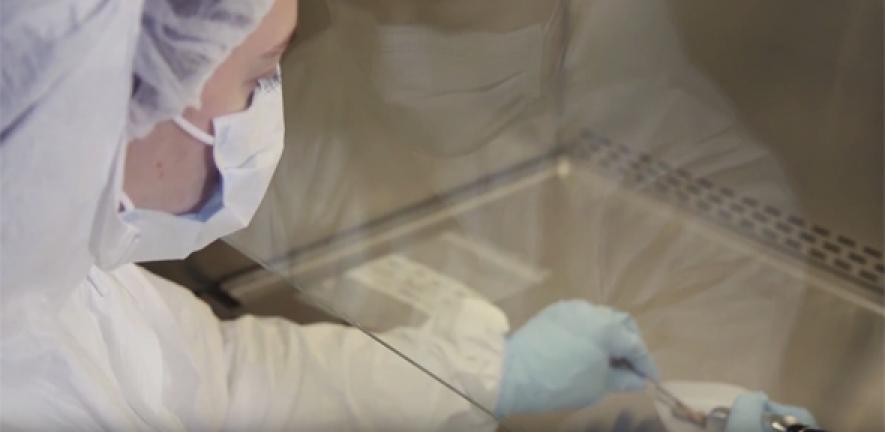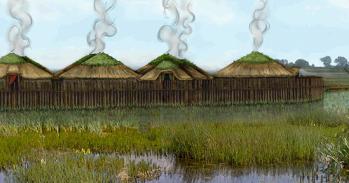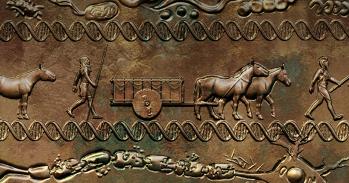
Researchers analysed DNA extracted from 4,000-year-old human remains to reveal that more than 90% of Lebanese ancestry is from ancient Canaanite populations.
Researchers analysed DNA extracted from 4,000-year-old human remains to reveal that more than 90% of Lebanese ancestry is from ancient Canaanite populations.
The fact that we can retrieve whole genomes from conditions not considered ideal for DNA preservation also shows how far the field has advanced technically
C.L Scheib
Scientist have sequenced the entire genomes of 4,000-year-old Canaanite individuals who inhabited the Near East region during the Bronze Age, and compared these to other ancient and present-day populations. The results, published in the American Journal of Human Genetics, suggest that present-day Lebanese are direct descendants of the ancient Canaanites.
The Near East is often described as the cradle of civilisation. The Bronze Age Canaanites, later known as the Phoenicians, introduced many aspects of society that we know today - they created the first alphabet, established colonies throughout the Mediterranean and were mentioned several times in the Bible.
However, historical records of the Canaanites are limited. They were mentioned in ancient Greek and Egyptian texts, and the Bible which reports widespread destruction of Canaanite settlements and annihilation of the communities. Experts have long debated who the Canaanites were genetically, what happened to them, who their ancestors were and if they had any descendants today.
In the first study of its kind, an international team of scientists have uncovered the genetics of the Canaanite people and a firm link with people living in Lebanon today. The team discovered that more than 90 per cent of present-day Lebanese ancestry is likely to be from the Canaanites, with an additional small proportion of ancestry coming from a different Eurasian population.
The team, including researchers from Cambridge University’s Department of Archaeology and Anthropology, and led by the Wellcome Trust Sanger Institute, estimate that new Eurasian people mixed with the Canaanite population about 2,200 to 3,800 years ago at a time when there were many conquests of the region from outside.
The analysis of ancient DNA also revealed that the Canaanites themselves were a mixture of local people who settled in farming villages during the Neolithic period and eastern migrants who arrived in the area around 5,000 years ago.
"Ancient DNA is becoming an indispensable tool for understanding population movements of the past. This study in particular provides previously inaccessible information about a group of people known only by surviving written accounts and interpretations of archaeological findings,” said Dr. C L Scheib, one of two Cambridge co-authors, along with Dr Toomas Kivisild.
“The fact that we can retrieve whole genomes from conditions not considered ideal for DNA preservation also shows how far the field has advanced technically," she said.
In the study, researchers sequenced whole genomes of five Canaanite individuals who lived 4,000 years ago in a city known as Sidon in present-day Lebanon. Scientists also sequenced the genomes of 99 present-day Lebanese and analysed the genetic relationship between the ancient Canaanites and modern Lebanese.
Dr Marc Haber, first author from the Sanger Institute, said: “It was a pleasant surprise to be able to extract and analyse DNA from 4,000-year-old human remains found in a hot environment, which is not known for preserving DNA well. We overcame this challenge by taking samples from the petrous bone in the skull, which is a very tough bone with a high density of ancient DNA.”
Dr Claude Doumet-Serhal, co-author and Director of the Sidon excavation site in Lebanon, said: “For the first time we have genetic evidence for substantial continuity in the region, from the Bronze Age Canaanite population through to the present day. These results agree with the continuity seen by archaeologists.
“Collaborations between archaeologists and geneticists greatly enrich both fields of study and can answer questions about ancestry in ways that experts in neither field can answer alone.”
Adapted from a Wellcome Trust press release.

The text in this work is licensed under a Creative Commons Attribution 4.0 International License. For image use please see separate credits above.




